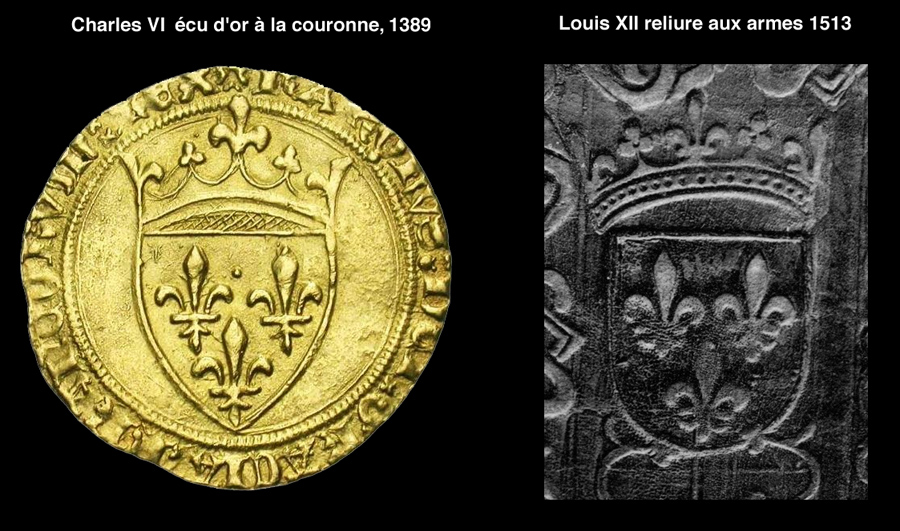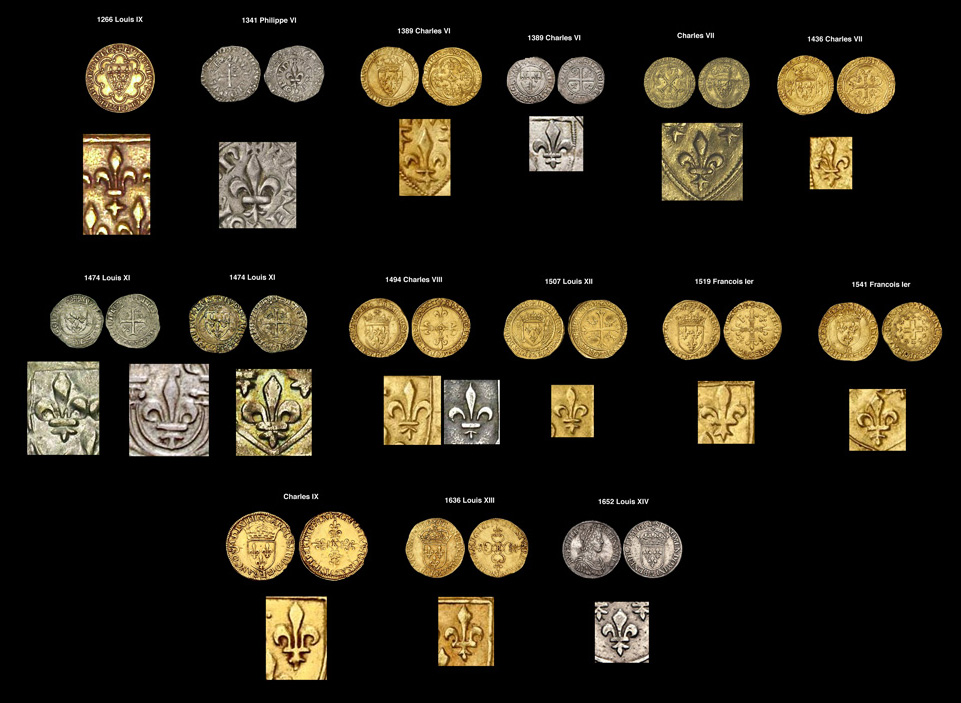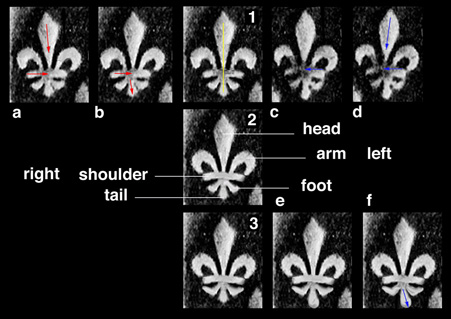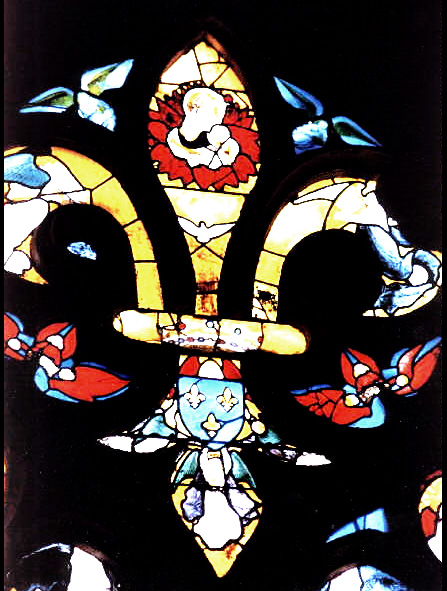

| When I began my study of the three fleur de lis within the armes de France that are part of the armes of Louis XII , I soon started to wonder just when and where this 'écu' with three lis became popular. If you search the internet on this you soon discover that the first écu was a gold coin (the écu d'or) minted during the reign of Louis IX of France, in 1266. Ecu (from Latin scutum) means shield, and the coin was so called because its design included a shield bearing a coat of arms. The écu of Louis IX, shown below contains six fleur de lis, they say that the number was reduced to 3 fleur-de-lis or in 1376, by order of Charles V the Wise. However you do not see the typical shield with three lis on French coins until Charles VI. |


| The other issue in this search was to try to discover what the ancient form of the lis was. I wondered if it had changed since the first coins but soon discovered that the motif was amazingly constant and stable from the time of Charles VI up to Louis XIV, as can be observed in the graphic above (click on the image to see an enlargement). My interest in all this was inspired by the observation that the lis in my example showed distinct irregular characteristics by which they could be easily, or more easily, recognized. To learn how they differ is bit like trying to recognize Chinese characters... to aid in my description of how these lis differ, I have made a diagram which will greatly simplify the matter. |

| In a perfectly symmetric motif the head and tail would be aligned as per example "1", however in the case of the Louis XII example, the upper right lis, shown here as "a", the head has shifted a bit to the left of center and is angled so as to be pointing towards the left foot instead of the tail. Now looking at the lis in the upper left Louis XII example, shown here as "d" we see just the opposite, with the head shifted slightly right of center and a bit tilted so as to be pointing at the right foot. The bottom center lis is more symmetric but has longer feet compared with those of "a". The tail is the next most obviously varying feature. It can be short and stubby as in example 'a' or it can be long as per 'd'" as well as angled to one side, as per 'a" where it is distinctly leaning to the left. |

| In Jacques Guignard's 1968 follow up paper on the atelier de Louis XII bindings, he was clearly concerned with the previous lack of precision in the illustration of this imprint model, and reproduced an improved model that is shown here in Fig.5. We can see however that this 'improved' type model lacks precision and further distorts the actual form of the lis, here we get the impression that the arms are continuous with the feet passing through the shoulder, this design was actually adopted during the reign of Louis XIV but is not what we see in the Louis XII imprints. |

| The photo shown above comes from an excellent page on "fleur de lis" at Heraldica org , that you must visit if you want to know all there is to know about the history of this motif. We see in this stained glass window the archetypal form of the lis as it was conceived in the 15th century. As I have shown in Fig. 3 the motif remained stable for centuries. We see that the 'arms' of the lis rest on the shoulders and are not a continuous extension of the feet. Further to this Guignards model ignores the tilt and off center position of the heads. What he does point out however and is perhaps the most obvious detail that will help recognize this imprint, is the longer tail of the upper right lis (see Fig 5). Below I show what I think is the next most obvious aberration to look for in these Louis XII examples. |

| Go to Digital Alchemy | return to the home page of cyclopaedia.org |